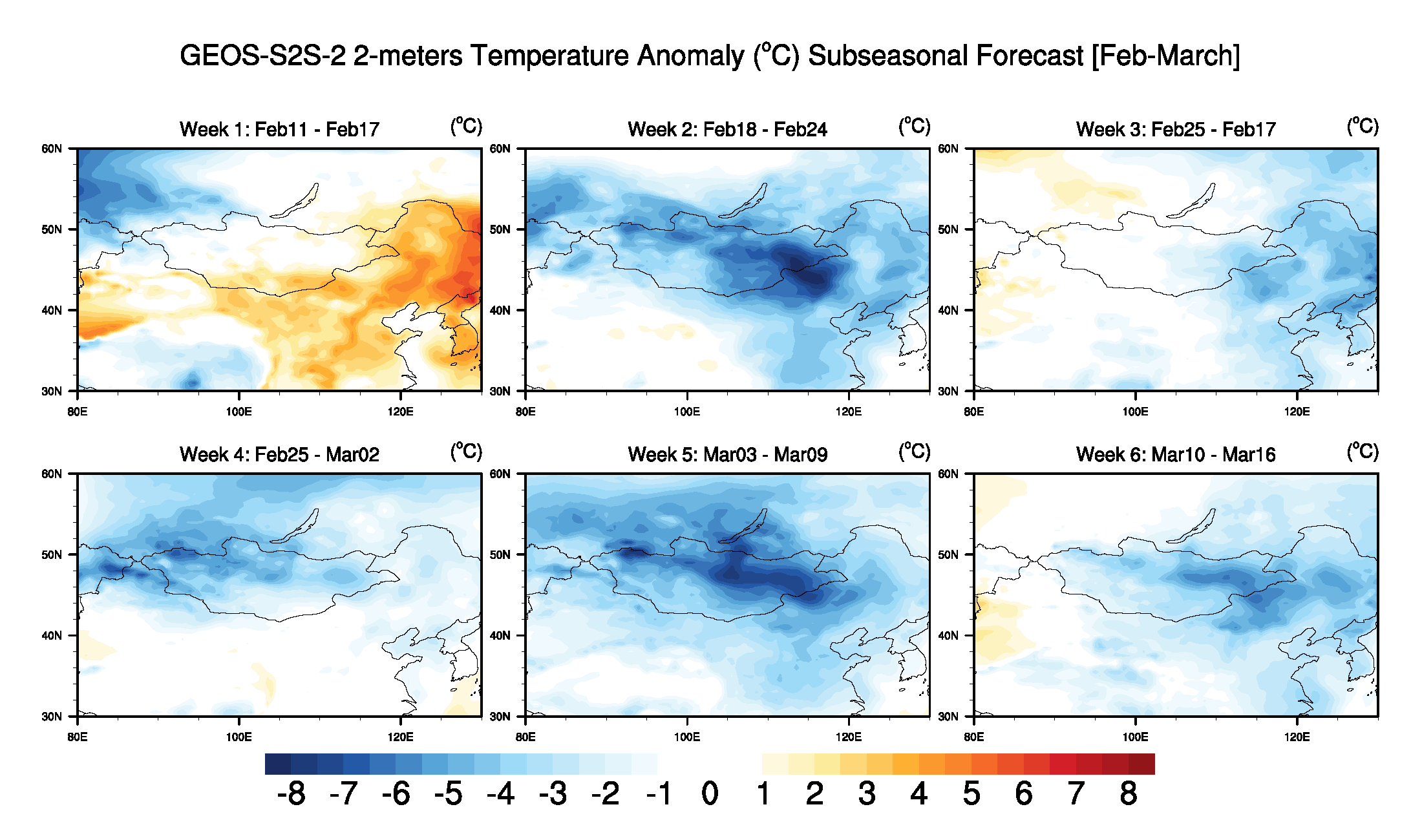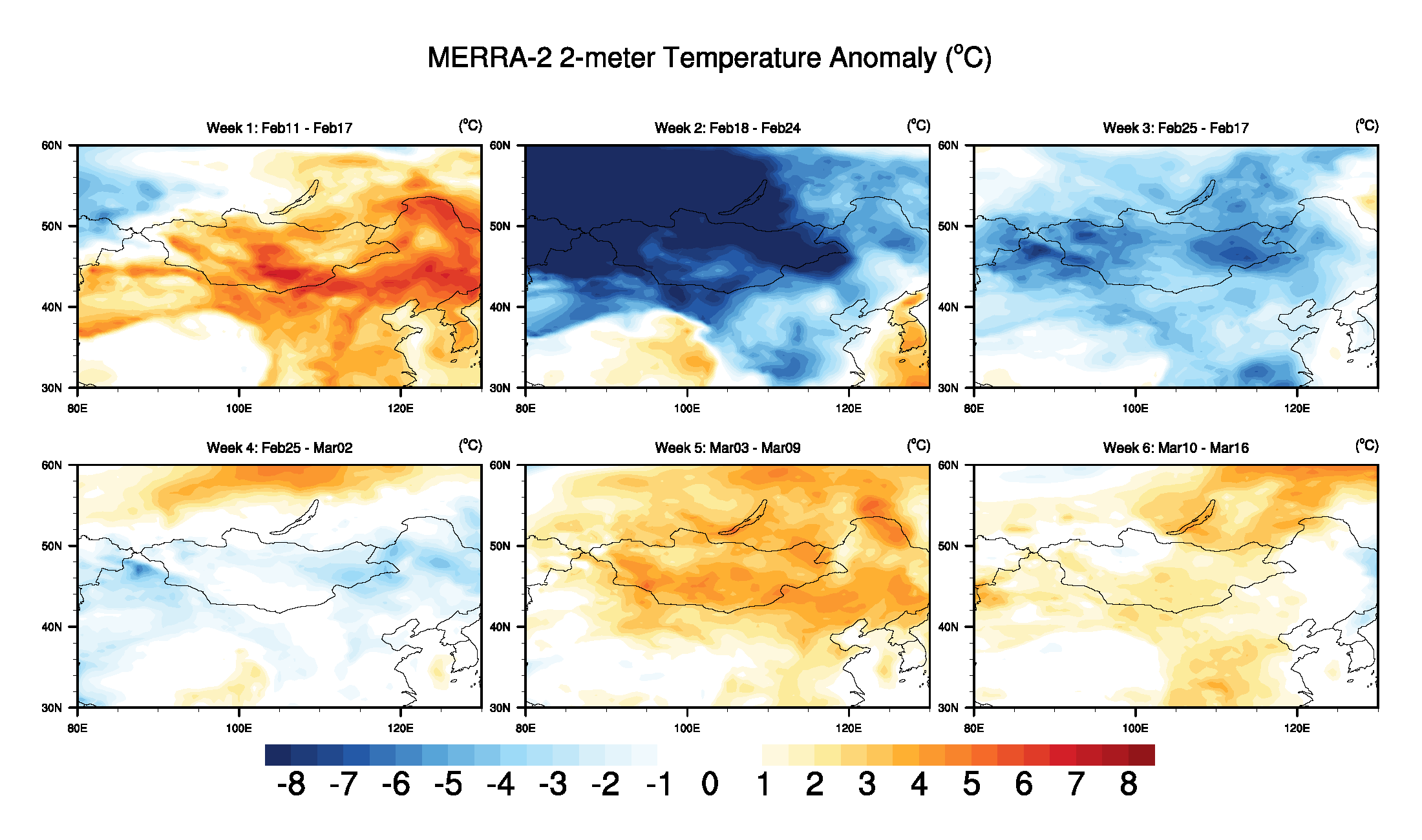GEOS-S2S-2 Predicts February 2024 Mongolia Dzud
During the winter of 2023/2024, Mongolia faced intense and prolonged cold conditions known locally as ‘dzuds.’ These extreme winter events are characterized by heavy snow fall preceded by summer drought. February 2024 saw approximately 90% of the country blanketed in heavy snow, along with icy conditions. These conditions deprived animals of suitable grazing grounds, severely affecting the living conditions of rural communities throughout Mongolia.
The GMAO’s GEOS-S2S-2 forecast system model predicted below average temperatures in February 2024. The figures below show GEOS-S2S-2 model weekly subseasonal forecasts, initialized on February 10th 2024, as well as the MERRA-2 data over the same time period, serving as a verification of this long-range outlook.


The unprecedented harsh winter resulted in temperatures dropping below -30C. The deep snow cover and icy conditions created exceedingly challenging living conditions for both people and livestock, causing disruptions and limited access to health care and social services. On February 14th, 2024, the Government of Mongolia declared an elevated state of readiness until May 15th due to severe dzud. Additionally, by March 28 2024, over 9% of the total livestock had been lost.
References:
1. https://www.who.int/westernpacific/emergencies/dzud-in-mongolia
2. https://www.who.int/mongolia/news/detail/04-04-2024-dzud-emergency-in-mongolia-moves-to-risk-of-floods-and-environmental-contamination
3. https://news.un.org/en/story/2024/02/1146422
4. https://www.ifrc.org/article/severe-and-prolonged-cold-spell-mongolia-known-dzud-taking-deep-toll-rural-livestock
5. https://reliefweb.int/report/mongolia/mongolia-severe-winter-iron-dzud-2024-6-february-2024


